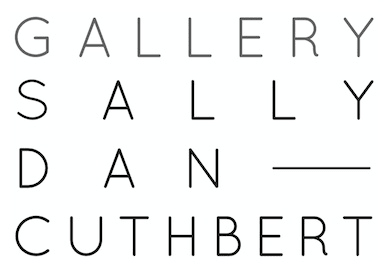Fernando do Campo
The Jackass laughed all the way to Kolkata (WHOSLAUGHINGJACKASS), 2018
acrylic on canvas
120 x 100 cm
The WHOSLAUGHINGJACKASS Cycle is a term loosely applied to the body of work I've been developing since 2017 that engages with the history of the Laughing Kookaburra as an introduced...
The WHOSLAUGHINGJACKASS Cycle is a term loosely applied to the body of work I've been developing since 2017 that engages with the history of the Laughing Kookaburra as an introduced species within Australia as a nationalistic critique. Kookaburras were released in Launceston between 1980 - 1907. This body of work stems from the colonial name of Laughing Kookaburra during the 19th century 'Laughing Jackass' and the speculative sentence 'WHOSLAUGHINGJACKASS' purposely written as a single word to remove spacing and punctuation to produce a series of propositions about how nationalism emerges as a construct from a series of fictions. The sentence asks who the joke actually falls on: who is laughing; who is laughing jackass, who is the jackass? Below I discuss separate components of this ongoing artwork and the provenance of each component.
The Kookaburra Self-Relocation Project re-released the narrative and sound of the first release of kookaburras into Launceston by releasing laughter into the public streets of the city early in the morning during the Mona Foma festival in 2020. When kookaburras were first released into Tasmania, a very alien sound which we call laughter entered the landscape. Nine performers worked together in collaboration with local Theatre Company IO Performance, to develop ways to communicate together non-verbally. Informed by histories of protest and queer parties, the project saw the performers use abstraction and anthropomorphism to interrupt the city with laughter. They were carrying banners and costumes of the 13 geometric shapes that spell WHOSLAUGHINGJACKASS. The laughter was jarring and contagious, the work celebrated and critiqued the history of the kookaburra as a nationalistic emblem at the same time.
The two-channel installation is actually two separate video works. Meaning it is designed to not be synchronized but rather both play simultaneously. One work is slightly longer than the other and both have multiple sections of silence. Every viewer to the gallery will see a different combination of moving images and soundscape, sometimes an intimate portrait or silent consideration, other times a flurry of sound from both screens. I encourage you to play both of them together or on two monitors while viewing.
The Kookaburra Self-Relocation Project re-released the narrative and sound of the first release of kookaburras into Launceston by releasing laughter into the public streets of the city early in the morning during the Mona Foma festival in 2020. When kookaburras were first released into Tasmania, a very alien sound which we call laughter entered the landscape. Nine performers worked together in collaboration with local Theatre Company IO Performance, to develop ways to communicate together non-verbally. Informed by histories of protest and queer parties, the project saw the performers use abstraction and anthropomorphism to interrupt the city with laughter. They were carrying banners and costumes of the 13 geometric shapes that spell WHOSLAUGHINGJACKASS. The laughter was jarring and contagious, the work celebrated and critiqued the history of the kookaburra as a nationalistic emblem at the same time.
The two-channel installation is actually two separate video works. Meaning it is designed to not be synchronized but rather both play simultaneously. One work is slightly longer than the other and both have multiple sections of silence. Every viewer to the gallery will see a different combination of moving images and soundscape, sometimes an intimate portrait or silent consideration, other times a flurry of sound from both screens. I encourage you to play both of them together or on two monitors while viewing.
Exhibitions
1818 Project, curated by Sarah Johnson, Newcastle Art Gallery, NSW, 8 September - 4 November 2018The Glover Prize, Finalist, Evandale, Tasmania, 2019
The Bay of Fires Prize, Finalist, Tasmania, 2019
Yet to Live in a Place Without House Sparrows, Burnie Regional Art Gallery, 2020
To Companion a Companion, PICA, Perth, 9 August - 9 October, 2022Literature
Join our Newsletter
* denotes required fields
We will process the personal data you have supplied in accordance with our privacy policy (available on request). You can unsubscribe or change your preferences at any time by clicking the link in our emails.

